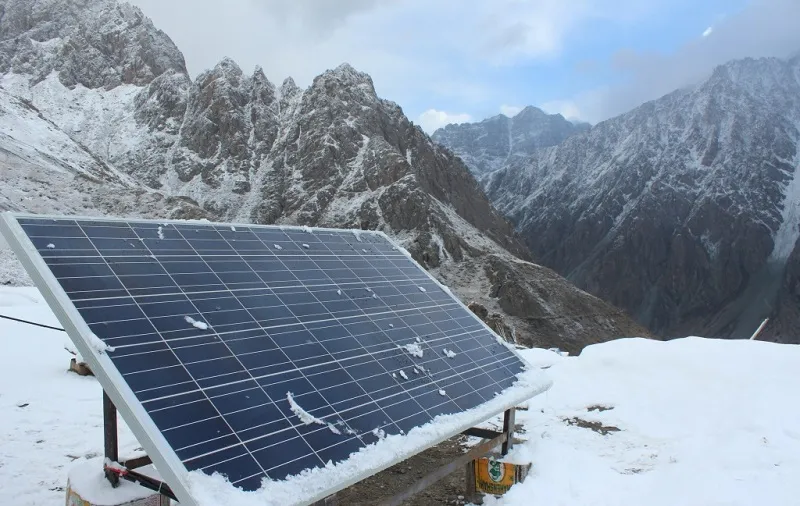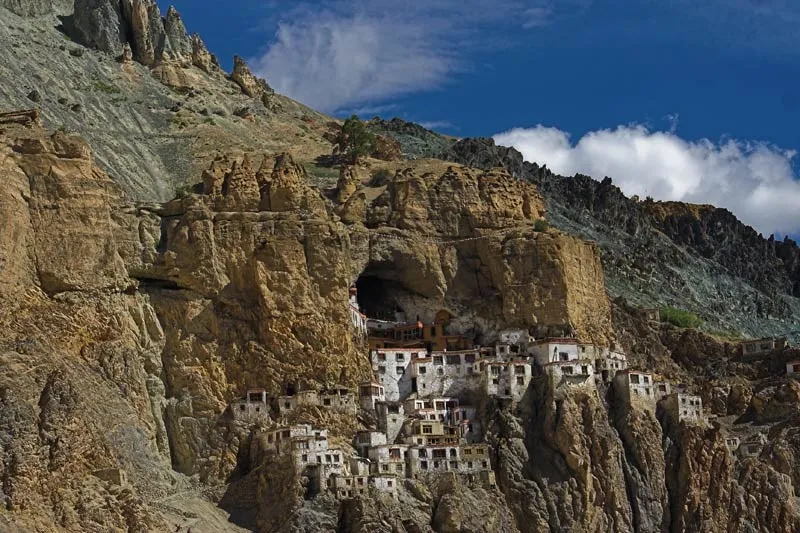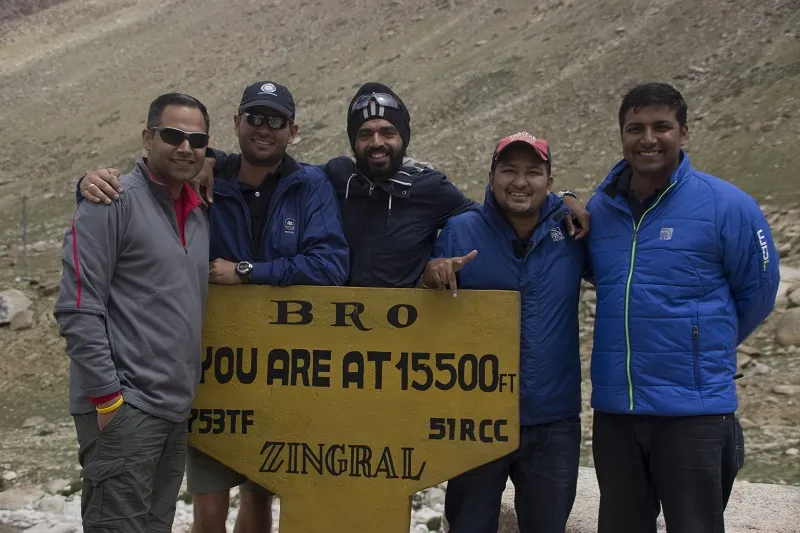From electrifying villages to making them self-sustainable – Global Himalayan Expedition’s journey of scale
“The reasonable man adapts himself to the conditions that surround him. The unreasonable man adapts surrounding conditions to himself. All progress depends on the unreasonable man.”
– George Bernard Shaw
As we begin our conversation, Paras Loomba, Founder of Global Himalayan Expedition (GHE), recollects his brief to his friend-cum-graphic designer,
I told him I wanted to do something in the land of Lamas, which would involve people from across the globe. The next morning, GHE’s logo was ready.
The logo comprises three concentric circles – the outermost is a globe representing people from all over the world and all walks of life; the second circle is a Buddhist painting meaning an entry in to the land of Lamas or Buddhism; and the third circle is a compass, which means GHE will empower participants and beneficiaries to find a direction in their lives.
Little did Paras know that the Lamas would soon become his family, and a few months into the programme he would quit a cushy job of over five years with National Instruments, ending up devoting his life for the upliftment of Ladhakis, who have been ignored for long. Paras, inspired by his month-long experience with 2041 (an expedition to Antarctica under the mentorship of Robert Swan, the first person to walk both North and South Poles), came back and started GHE – an annual adventure expedition focussed on creating a tangible impact for the remote Himalayan Communities.

Explaining why Ladakh continues to remain under-developed, Paras says,
The window of operation for any development intervention is extremely narrow. With roads being open only for five months every year and villages being remote from one another, it is difficult to do something tangible. Moreover, the Himalayan terrain doesn’t allow setting-up factories or industries leaving people unemployed with limited/no access to markets.
What is GHE all about?
Lankarchey Brok, a village of 30 households situated about 35 km from the Kargil headquarters, saw light for the first time in 70 years. A team of enthusiastic ‘impact tourists’ led by Paras’ team set up a DC solar micro-grid system using LED technology powered by solar and batteries in two days. This is what GHE does – every year it brings together a carefully selected team of 20 impact tourists who, over a fortnight, utilise adventure tourism as a tool to develop remote, ancient villages that are rich in heritage and culture, bio-diversity, and natural resources. The clean energy solution empower these communities to be self-sustainable.

It’s worth introspecting as to why no one thought of capitalising the 300 days of bright sunlight Ladakh receives every year. Paras says,
Each of our indigenous solar microgrid can provide a home with up to 10 hours of electricity per day with a backup of two days. And this will run interrupted for five years as compared to other solar lanterns available in the market, which have a maximum life-span of two years.
The grid size varies from 150 to 500W. This enables a house to operate a LED TV, five LED lights, a fan, and a street light. GHE team works closely with IEEE Smart Village (Institute of Electronic and Electrical Engineers) on the electrification and energy efficiency development.
Electrification of villages started only in the second year. In the inception year, the team set up an E-base in August 2013, next to the Mahabodhi Residential School in Leh, which houses many things today – a robotics lab, digital library of documentaries, interactive learning tools, and an ability to connect to any institution in the world through Skype and video conferencing – all because of solar energy. The impact has been stellar with the students winning the National Design for Change 2014 contest for developing an ingenious approach to waste management in schools. GHE has opened residential fellowships in the school and has also signed a MoU with INDUS College, Ahmedabad, who will take in an exceptional candidate into its engineering course on a complete scholarship arranged by GHE. But Paras says, “This is just a start. There is a lot more we need to do for their education.”
The process
In the beginning, a village interested in being electrified contacts GHE who then conducts a survey. Furthering favourable conditions, the team seeks an approval from the local sarpanch ensuring that the local leadership is involved in every decision. Finally, an amount is estimated for setting up the microgrid as well as its maintenance. The villagers are mandated to open a joint account and deposit money (usually ranges between Rs 100 and 200 per household per month). After this, the solar microgrid is transported to the location with the help of volunteers or through the expedition; it is finally set up and villagers are trained on its maintenance. The GHE team then monitors the performance remotely.
In 2014, the team trekked for two whole days to reach the Sumda Chenmo village and fitted 120 LED lamps in 14 households. A year later, their impact assessment showed that the village displaced the use of 1,600 litres of kerosene, which amounts to 4,000 kg of CO2!
Scaling up and impact
Over the last three years, GHE has electrified 10 villages benefiting over 2,000 people. But the team believes its responsibility doesn’t end with electrifying a village. There is a greater need to make it self-sustainable and this realisation led to the beginning of ‘Green Himalayan Villages’ – a project that opens up homestays in electrified villages to tourists promoting income generation. Paras says,
It’s similar to an Airbnb model. But we create customised travel packages where tourists can entirely experience staying with a local who will indulge the tourists in village walks/treks, nearby attractions, home-made food, and various activities such as farming barley.
So far, five villages – Umlung, Rakuru, Shingo, Sumda Chenmo, and Lankarchey Brok – have been opened to the world, which have collectively gained $13,000 (close to Rs 9,00,000). Paras says, “We have built in a strong feedback mechanism linked to our online portal which is helping us keep a quality check on each homestay.”

Furthermore, since the microgrid extends workhours for at least four hours a day post-dusk, women folks are engaging in reviving old forms of art, craft, and weaves. As of now, the GHE team helps sell their produce at seminar, talks, and conferences they are a part of, but will soon be working on a model to promote this as well.
Future

This year, the expedition team is electrifying Phugtal village, which was deeply affected by cloud bursts last year leading to the formation of an artificial lake and a landslide that blocked multiple bridges in the valley. Apart from this, the team is undertaking efforts to electrify 30 villages and build 70 homestays in the Lugnak block of Zanskar. Paras says, “Since all the villages are in one cluster, we will also open an E-base that will focus on digital literacy and skill development.”
GHE is indeed a great example of what like-minded people can achieve together. As Paras rightly says,
GHE isn’t an individual success story and it never was. It’s a testimony to the efforts of my entire team as well as the locals who put their heart and soul in to giving their lives, a new direction!

Applications for GHE 2016 are now open – http://www.ghe.co.in/join.html







